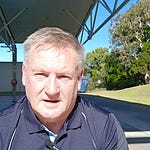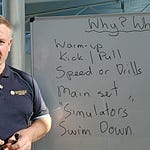THREE KEY CONCEPTS:
Perfect technique doesn’t exist — there’s only what works for you.
Fundamentals matter — but so does flexibility, feel, and flow.
Individuality is the secret weapon — not something to be corrected.
Let’s get something straight:
There is no such thing as perfect swimming technique.
There. I said it.
The swimming world is obsessed with this mythical idea of perfection — the flawless stroke, the textbook kick and the robotic symmetry that would make a biomechanist cry tears of joy.
But here’s the truth: perfect technique is a myth.
What matters is effective technique — for you.
Just like every kindergartener learns to write the letter “a” a little differently — a little taller, a little rounder, a little wonkier — every swimmer learns to move through water in their own way.
And that’s not a flaw. That’s the beauty of it.
Great coaches don’t build clones.
They build swimmers who understand how their body moves best through water — and how to refine that movement without losing their natural rhythm, feel, and personal style.
Sure, there are technical fundamentals we all need to consider including:
Soft hands
Loose feet
Head-hips alignment
Control under pressure
Rhythm, relaxation, and timing
But trying to cram every swimmer into the same narrow technical box is like trying to make every child write their letters the exact same way: it might look neat… but it kills creativity and confidence.
Elite swimmers? They own their style.
Popov wasn’t Phelps. Phelps wasn’t Ledecky. Ledecky isn’t Titmus.
You need to find the technique that works for your physiology, your mindset, your experience — and develop that with purpose.
So no, we’re not chasing “perfect.”
We’re chasing personal bests, efficiency, feel, and freedom.
THREE PRACTICAL EXERCISES FOR COACHES, SWIMMERS & TRIATHLETES:
1. Video Mirror Drill. Film swimmers from front and side. Watch it back. Ask:
“What do I notice about my rhythm, timing, and movement?”
Not “what’s wrong?” but “what feels right and what could flow better?”
2. Alphabet Stroke Series. Assign letters of the alphabet to body parts (e.g. A = Arms, B = Breathing, C = Core). Pick three each session and ask swimmers to tune into their feel and awareness in those areas — their own alphabet of improvement.
3. Write Your Own 'a' Sets. Let swimmers design a short set (3x50 or 4x25) where the only instruction is: “Swim how it feels best.” Then discuss it. Self-awareness is the foundation of individual technique development.
💡 Final Thought:
Don’t aim for someone else’s version of perfection.
Discover your own version of excellence — and swim into it with confidence.
VIDEOS RECORDED AT BEAUTIFUL EVANS HEAD AQUATIC CENTRE, NSW, AUSTRALIA with the kind courtesy of RICHMOND VALLEY AQUATICS.
https://richmondvalleyaquatics.com.au/
Copyright Wayne Goldsmith. All Rights Reserved.













Share this post